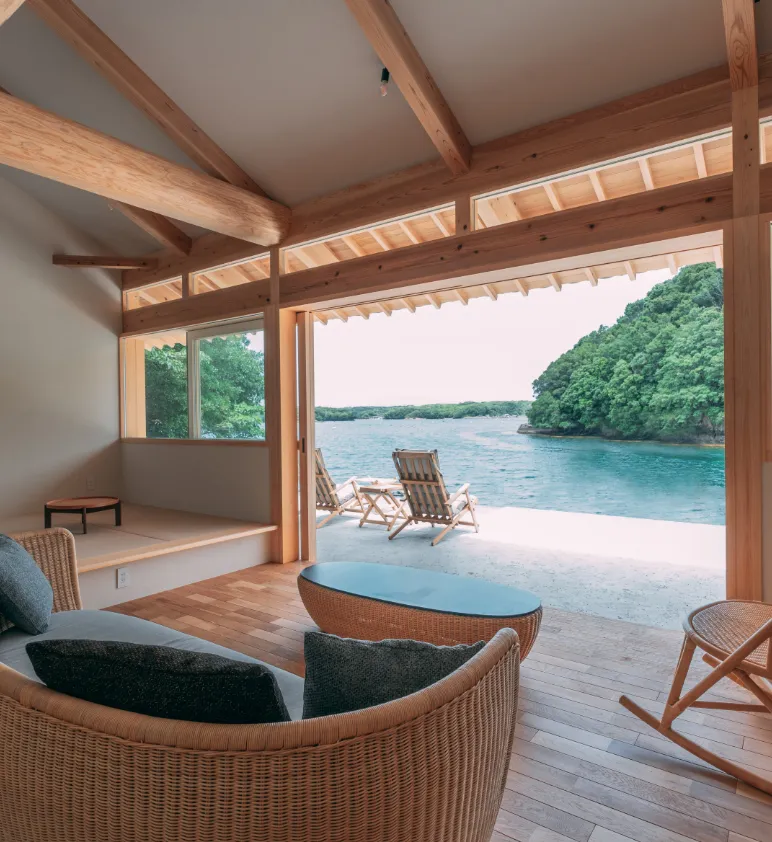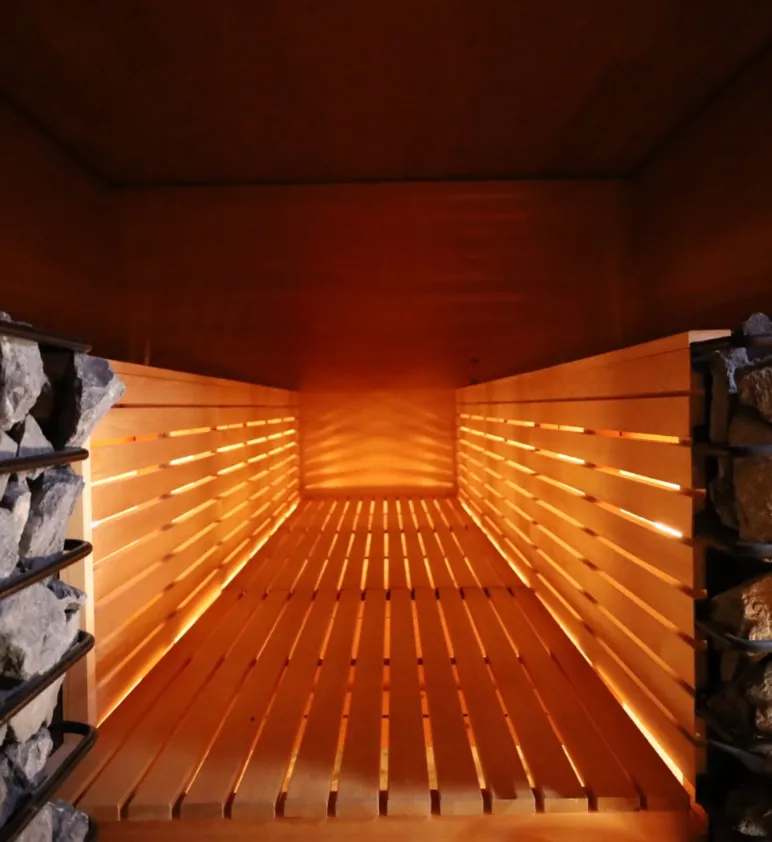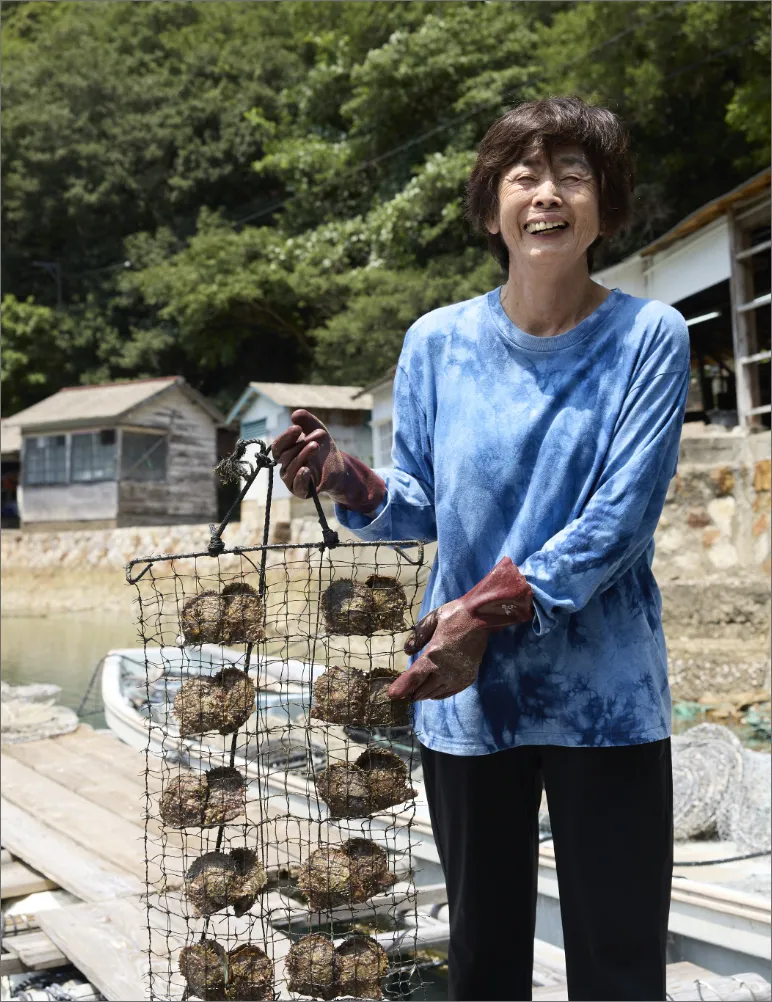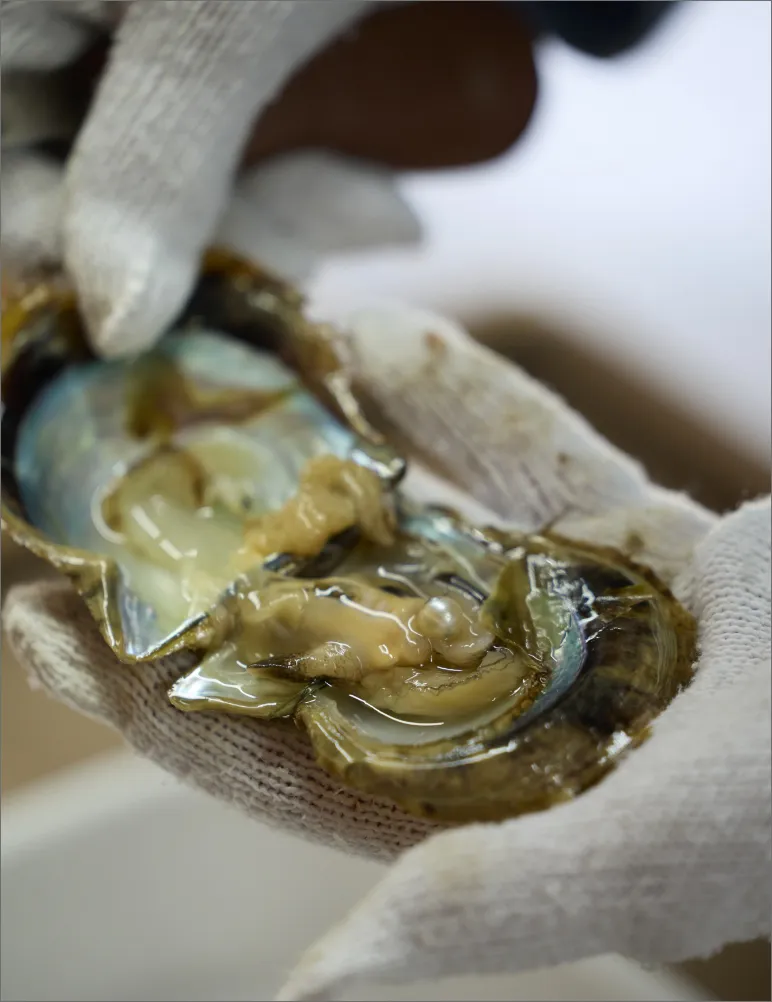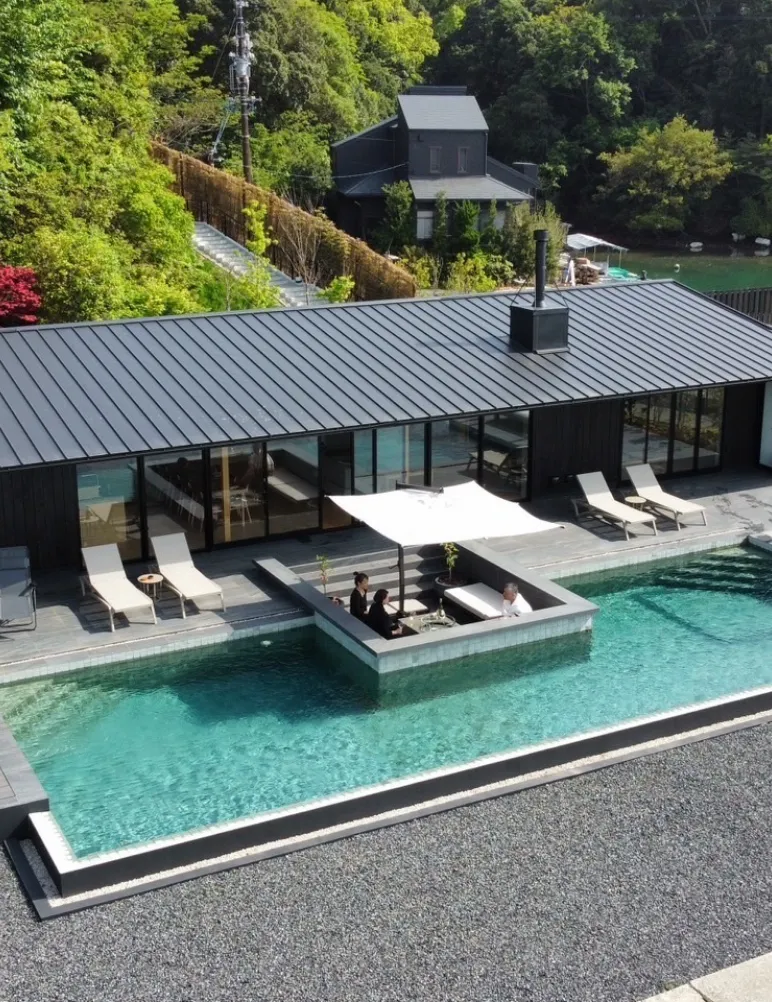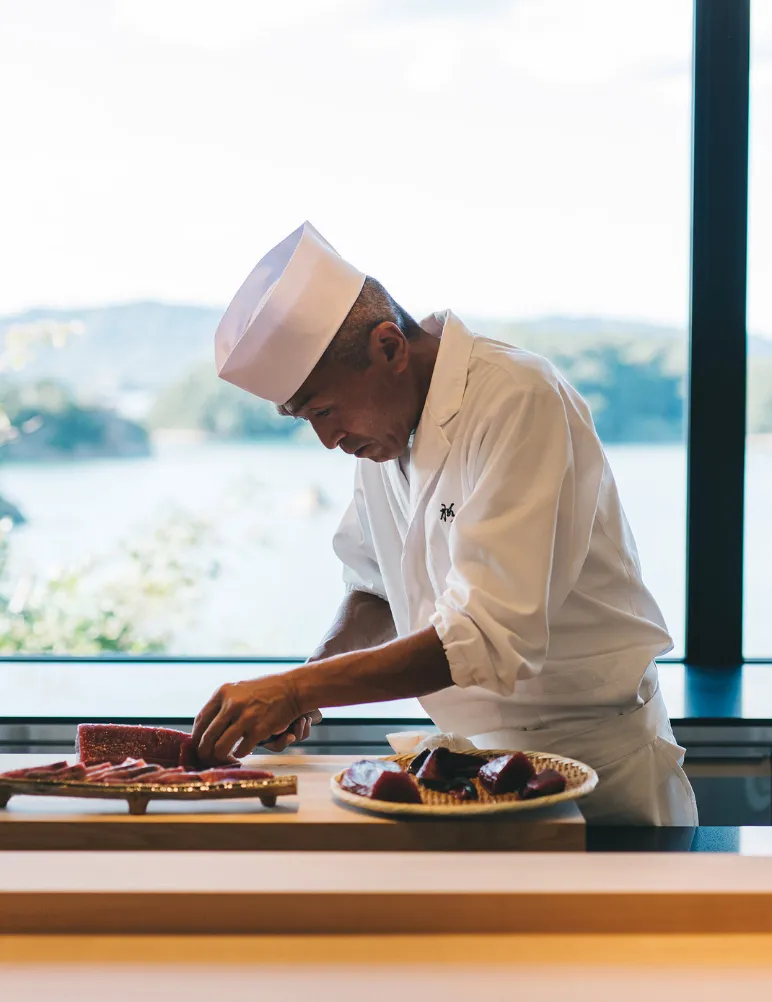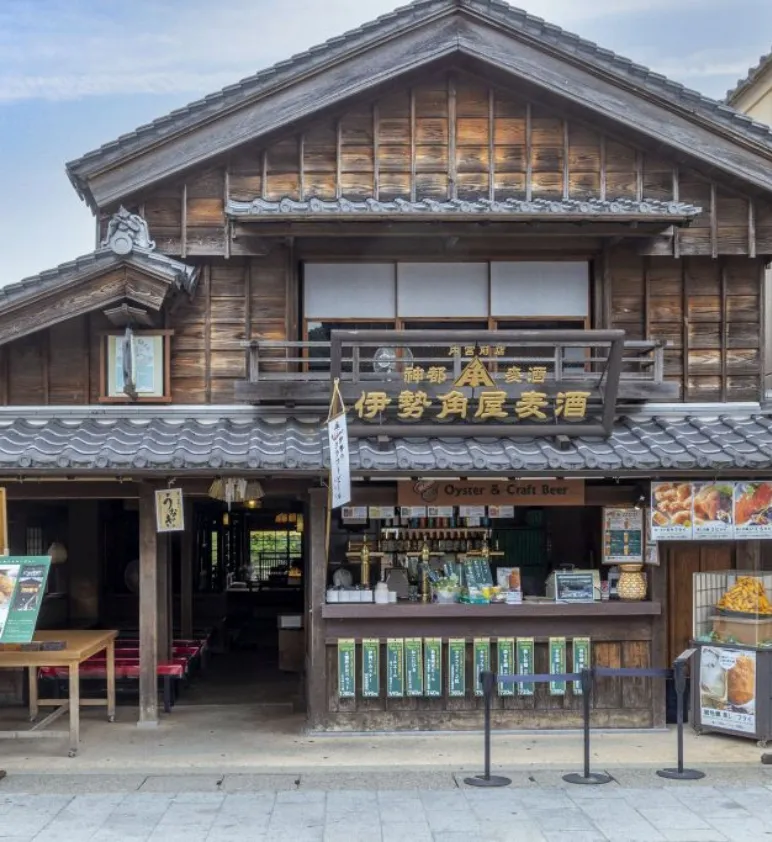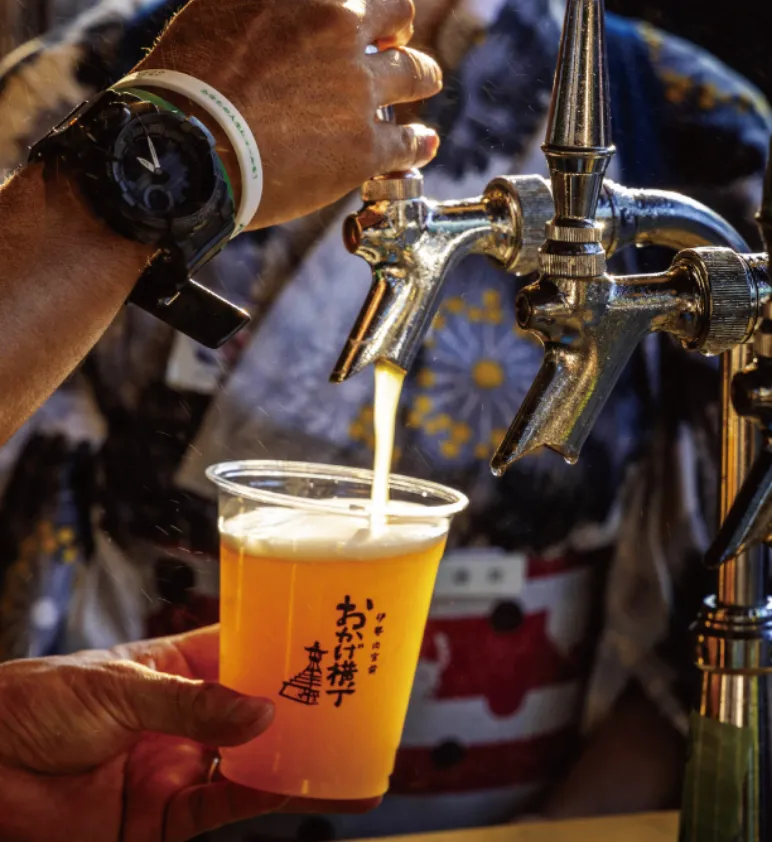
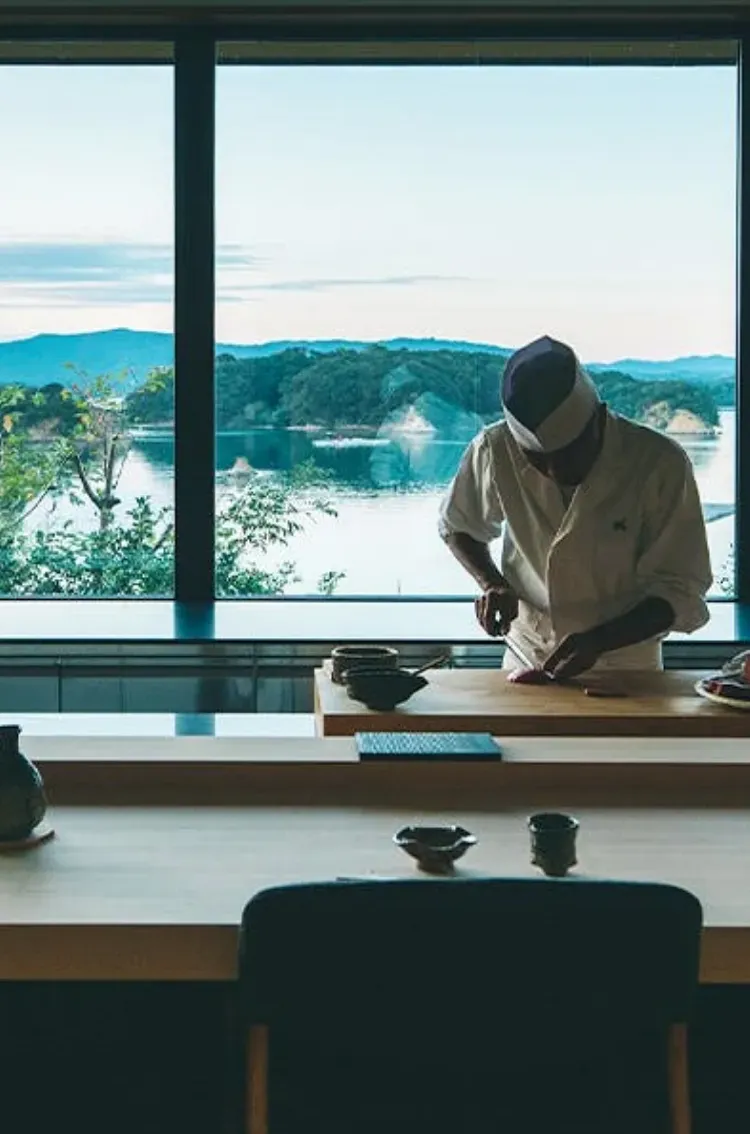
“ Reimagination ”
Inspired by Tradition: A Journey of Reimagination
in ISESHIMA

From the Grand Shrines of Ise Jingu to islet-studded Ago Bay, the traditions of ISESHIMA are readily on display – not as relics of a distant past but thriving as a part of contemporary Japan.
You see it in shrine rituals and the centuries-old stores that began life serving pilgrims to the region. It’s preserved by people like ISESHIMA’s female Ama divers. But along with this continuity of tradition, there’s another local trait – traditions being reinterpreted for the modern age.
Take ISESHIMA’s pearl industry. It was here in Toba in the 1890s that Kokichi Mikimoto, the founder of the now-world renowned Mikimoto Pearls, successfully created the world’s first cultured pearls, kickstarting a pearl industry that has become synonymous with ISESHIMA. Pearls are still a big business in the region—with the local Akoya pearls highly regarded around the globe for their luster and varied colors—but the pearl heritage has also been channeled into a range of contemporary offerings for travelers.

A standout example is COVA KAKUDA, a luxury retreat nestled around a picturesque cove in Ago Bay. It came about when local pearl maker Kakuda Pearls embarked on a project to regenerate one of their former pearl processing factories–active from the 1930s to 70s–building COVA KAKUDA to help create what’s dubbed a satoumi – a coastal area where biological productivity and biodiversity is increased through human interaction.
On first inspection, COVA KAKUDA is a treat for the senses. There’s a faint aroma from the burning logs that fuel the saunas, and a soundscape that blends birdsong, the rustling of trees, and maybe the occasional clucking from the free-range chickens. With sustainability a guiding concept, the four guest villas and other buildings in the retreat are all original structures from the pearl factory that have been given a natural, modern makeover – although there are also connections to the past, like black and white photos of the pearl factory in its heyday.
So too, the property aims to function in harmony with both the local community and environment, something that is reflected in numerous ways, from the simple act of composting and growing much of their own produce to the range of immersive experiences available to guests. Among other things, you could go on a local market tour with COVA KAKUDA’s chef, harvest herbs and plants for dyeing and aromatherapy workshops, or undergo a seawater purification ritual inspired by traditional Shinto ceremonies before taking a guided tour of Ise Jingu.
A 20-minute drive away, in a sheltered cove accented by small fishing boats and a rickety collection of wooden pearl rafts, Pearl Miki has come up with another riff on the pearl farming theme. Since 2013, they’ve been making the pearl farming experience accessible to travelers by offering a rare program where (as part of a group tour), you can pop onto one of the pearl rafts, farm your own pearl, and then take part in a workshop to craft it into a one-of-a-kind accessory.
Of course, it isn’t just ISESHIMA’s pearling heritage that is being reimagined in the bay area. Sushi master Yuichi Hori has used the natural surrounds of a remote island as a setting for a sushi restaurant and private villa called MOKU ISESHIMA, where he serves locally caught seafood but also offers guests an exclusive island retreat – a chance to feel entirely removed from the hustle and bustle of the modern world, while immersing oneself in nature.
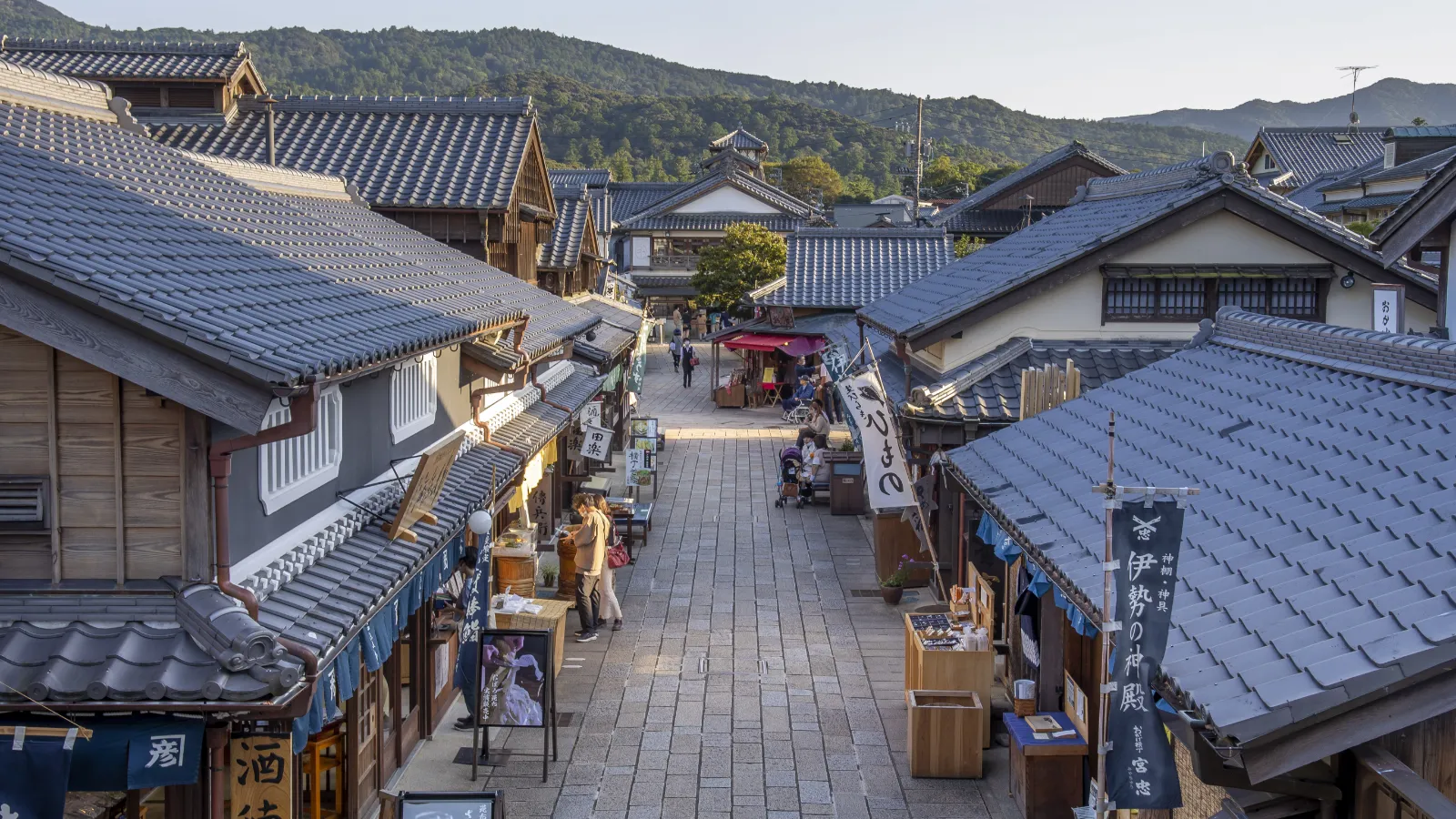
That trend continues in Ise City, as you’ll see with a stroll along the street that leads to the entrance to Ise Jingu’s Naiku. When pilgrimages to sacred sites like Ise Jingu began to grow in popularity in the 16th century, this street developed as a pilgrim center. Businesses of all sorts flourished here to satisfy the needs of pilgrims, from inns and restaurants to stores selling religious paraphernalia. Many are still operating – some in innovative ways.
Kadoya Beer, for example, started life in 1575 as a teahouse serving pilgrims, then branched into making miso and soy sauce in the Taisho era (1912-26), before adapting their knowledge of fermentation to craft beer. Now, the company is one of the most innovative brewers in the region, producing award-winning beers like their Hazy IPA and Hime White, which you can try in one of the lovely old wooden buildings lining Oharaimachi, along with local culinary specialties like oysters.
Elsewhere on the street and in the nearby Okage Yokocho area, mixed in among the cafes, tea merchants, sake stores and classic confectioners, you’ll also find craft shops selling both traditional products and modern variations of their craft – be that indigo-dyed fabrics, ceramics or woodcrafts.
Whether you are exploring Ago Bay or visiting Ise Jingu, you’ll never be far away from tradition, and never far from modern reinterpretations that honor ISESHIMA’s roots.
